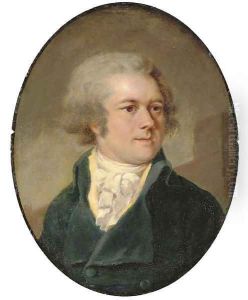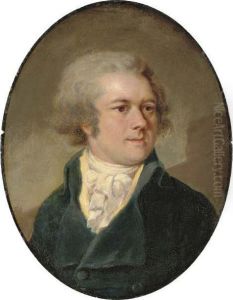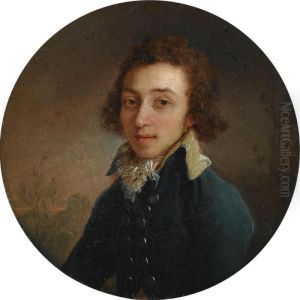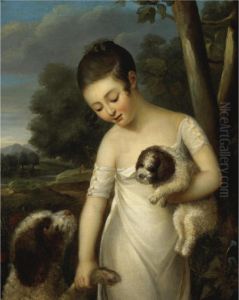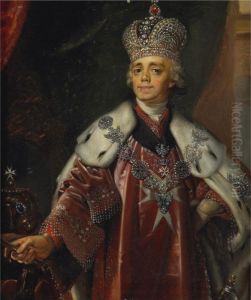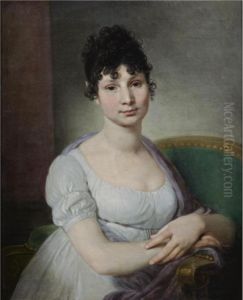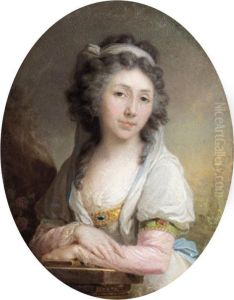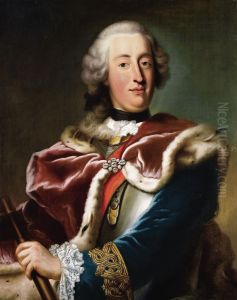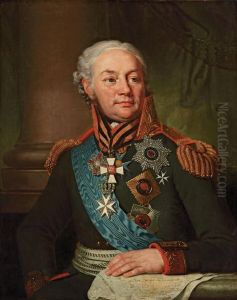Vladimir Lukich Borovikovskii Paintings
Vladimir Lukich Borovikovsky was a prominent Russian portrait artist who is best known for his portrayal of members of the Russian nobility and the imperial family during the late 18th and early 19th centuries. Born on July 24 (Old Style), 1757 in Mirgorod (now Myrhorod, Ukraine), which at the time was part of the Russian Empire, Borovikovsky hailed from a Ukrainian Cossack family. His father, Luka Borovikovsky, was an icon painter, and this early exposure to art profoundly influenced Vladimir's career.
Borovikovsky's transition from icon painting to secular art marked a critical turning point in his career. After moving to St. Petersburg in 1788, he came under the patronage of Catherine the Great. His talent was recognized by the Empress after he painted a portrait of Catherine's grandsons, the future Tsar Alexander I and Grand Duke Constantine Pavlovich. This endorsement boosted his career, and he became one of the most sought-after portraitists in Russia.
During his time in St. Petersburg, Borovikovsky became a member of the Imperial Academy of Arts and received commissions from the Russian court and nobility. His style combined the realistic detail of Russian iconography with the graceful influences of Western European portraiture. This synthesis created intimate and often idealized representations of his subjects, which were characterized by their elegance and psychological depth.
Notable works of Borovikovsky include the portraits of Empress Maria Feodorovna, Prince A.B. Kurakin, and Countess E.P. Rostopchina. He was also known for his religious paintings, which he continued to produce alongside his secular commissions. Borovikovsky's legacy lies in his ability to capture the transitional period of Russian society through his portraits, which reflected the influences of both the Enlightenment and the romanticism that would follow.
He died on April 6, 1825, in St. Petersburg. After his death, Borovikovsky's works were somewhat forgotten until the 20th century, when his contributions to Russian art were reevaluated and he was recognized as one of the foremost Russian artists of his time. Today, his paintings can be found in major Russian museums, including the Tretyakov Gallery in Moscow and the Russian Museum in St. Petersburg.
